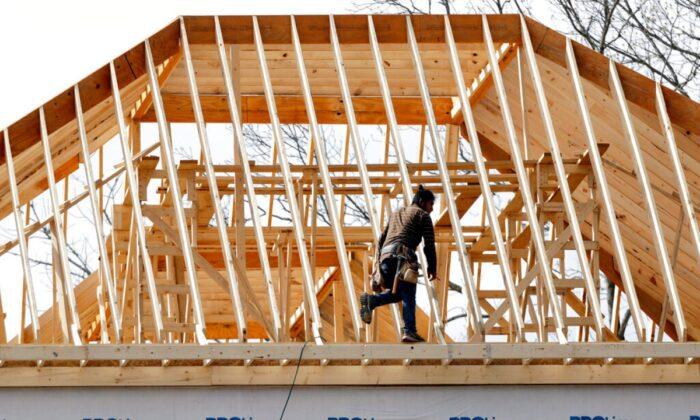New home construction in the United States saw a notable increase in the month of December, amid unseasonably mild temperatures, according to a Commerce Department report from Jan. 19.
The report said that housing starts rose 1.4 percent to an annual rate of 1.702 million in December representing a 1 percent increase from the previous month.
This was a jump from the revised rate of 1.678 million in November.
Compared with December 2020, housing starts were up 2.5 percent.
Economists revised their December estimates after they expected housing starts to drop to a rate of 1.650 million from the 1.679 million originally reported for November.
Building permits spiked by 9.1 percent to an annual rate of 1.873 million from a revised rate of 1.717 million in November, and 6.5 percent from a year ago, according to the report.
The permits, which are an indicator of future housing demand, were expected to drop to a rate of 1.701 million from the 1.712 million originally reported for the previous month.
The surge in permitting was driven by a 112 percent increase in the number of housing structures authorized in the Northeast.
Permit activity also rose nearly 22 percent in the Midwest on a monthly basis, but it fell in both the South and the West.
Last December was the warmest December on record, according to the National Centers for Environmental Information.
The good weather eased the typical burdens on winter home construction.
However, the outlook for home building appears cloudy, as prices soar for building materials after the government nearly doubled duties on imported Canadian softwood lumber, which could hamper activity in the coming months.
The United States, last November, raised the duties on Canadian softwood lumber to 17.9 percent after a review of its anti-dumping and countervailing duty orders.
Duties on Canadian softwood lumber had sat at 9 percent, after the Trump administration reduced the levels in December 2020.
The Biden administration had stuck to those arrangements until the Commerce Department’s review in November.
The aggregate cost of residential construction materials has increased almost 19 percent since December, according to the National Association of Homebuilders.
The NAHB has said higher material costs and shortages are adding weeks to typical single-family home construction times.
Prices for softwood lumber, used for framing, soared 24.4 percent in December, a major jump, after rising 6.9 percent in November.
A nationwide shortage of salable homes has boosted homebuilding, but growing mortgage rates, supply constraints, and rising housing prices could make home purchasing less affordable.
Mortgage rates have risen as financial markets factor in the expected interest rate hikes from the Federal Reserve as early as March, amid high inflation and a labor market that facing shortages.
The 30-year fixed-rate mortgage averaged 3.45 percent at the end of last week on Jan. 13, up from 3.22 percent in the prior week, according to data from Freddie Mac.
“Momentum could cool this year as interest rates rise, we still expect homebuilding to stay at healthy levels as builders make progress on backlogs. Homebuilders’ confidence hit a 10-month high in December, while building permits, a good proxy for future home construction, remain elevated,” said Robert Kavcic, senior economist at BMO Capital Markets.






Friends Read Free